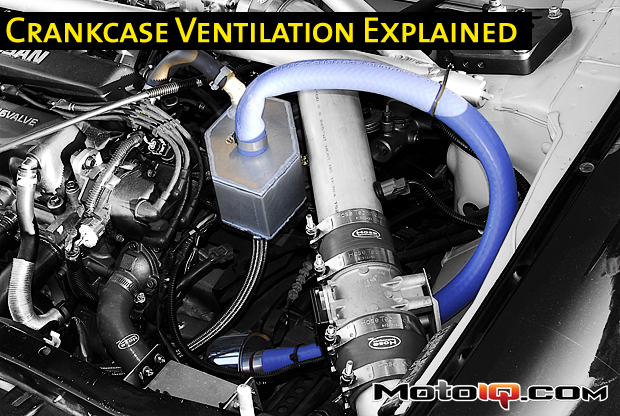,
Ok, now that we have the basics down the rest should be a lot easier to get through. Nissan basically upgraded the crank case ventilation system when they moved on to the roller rocker head and have kept it generally the same from then on all the way to the SR20VE engines including the N1 and the 20V varieties.
They did two things when they upgraded the system. They got rid of the stand-alone oil separator (catch can) and built it into the valve cover. They also moved the “PCV” port from the top-left of the valve cover way over to the right side. This simplified and cleaned up the engine bay by including the oil separator for the right pathway into the valve cover. It also increased the ability for the system to remove oil from the blow-by because of a minor but significant rerouting of the right pathway. I’ve tried to describe this visually by changing the colors of the arrows as they flow through the system. You should be able to notice that the arrows are more blue in these diagrams than in the ones from the old system.
Here’s a diagram of the system:

You should notice immediately that the stand-alone catch can is gone now, and that tube connects directly to the forward portion of the valve cover. The new valve cover has an additional oil separation pathway that it didn’t have before which serves the purpose of the old stand-alone catch can. You’ll also notice right away that the PCV hose has moved way over to the right and blow-by gasses have much farther to travel (through more oil separation labyrinth) before leaving the valve cover.
Here is what things look like at idle or partial throttle with the inactive sections greyed out:

Hopefully these diagrams are making sense and looking familiar to you by now. As you can see, the blow-bay gasses are still forced to go through all of the oil separators even though we’re at idle or partial throttle. This is not the case in the old system.
Now for a look at what happens during WOT. As before, the PCV hose is taken out of the equation because nothing is going to flow to the manifold now that the pressure in the intake manifold and the valve cover is about the same. Even if some blow-by gasses do go through the PCV hose, there is lots of it left and the other pathway to the intake tract is vital to providing a wide enough pipe for the gasses to escape through.

That’s about all there is to the newer system. It’s a step above the old system in many ways.



